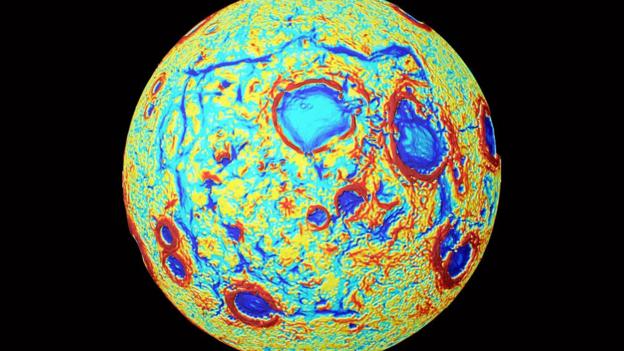Central Bank to impose limits on home loans
The Regulator said to be preparing to publish a consultation paper on its proposals


The Central Bank plans to impose limits for the first time on how much banks can lend home buyers as property values in Ireland soar, two people with knowledge of the matter said.
The Central Bank plans to impose limits for the first time on how much banks can lend home buyers as property values in Ireland soar.
The regulator is said to be preparing to publish a consultation paper on its proposals within weeks.
Banks and lobby groups will have a chance to comment on the plans, which center on introducing loan-to-value and loan-to-income restrictions.
A spokesman for the Central Bank declined to comment.
House prices are surging even as banks grapple with the aftermath of mortgage crisis that forced the government to bail out most of the nation’s lenders.
A quarter of the country’s owner-occupier home loans are in arrears or had their terms eased.
Loans granted during the boom for more than 85 per cent of the property value were most likely to default in the wake of the crash, central bank economists said today.
“There is no evidence the current price increases are credit driven, but the number of mortgage approvals, a potential measure of new mortgage credit demand, rose sharply in the first seven months of 2014,” said central bank economists Niamh Hallissey, Robert Kelly and Terry O’Malley in a report published today.
“This is therefore a key time to investigate the tools available to policy makers to safeguard future lending.”
Irish home prices soared 15 percent in the year through August, driven by a 25 per cent jump in Dublin values amid a shortage of properties in the Irish capital, the Central Statistics Office said on September 24.
Still, values remain 41 per cent off their 2007 peak both for Dublin and nationally. Any limits would particularly affect first-time buyers, according to one of the people.
Irish mortgage approvals rose by 54 per cent in value to €462 million in July compared to the same month last year, according to Banking and Payments Federation Ireland.
In 2006, mortgage lending surged to €40 billion. Davy, Ireland’s largest securities firm, said that some lenders are beginning to relax lending criteria as the property market recovers.
“It appears some banks are willing to lend 4.5 times combined income to higher-rated borrowers, but this is at the upper end of what is typically deemed responsible internationally,” Davy said in a report yesterday.
“Typically a limit of 3-4 times is considered a more acceptable level. The onus is on the central bank to put limits on the amount of money that can be borrowed to help keep house prices in check.”
Thirteen children have died on our roads so far this year,
7 were killed in the whole of 2013
Deaths on Irish roads have remained high this year, after increasing for the first time since 2005 last year.
140 people have been killed so far this year on Irish roads.
The Road Safety Authority has expressed concern about the high numbers of vulnerable road users being killed.
Thirteen children under the age of 14 have died in road traffic accidents so far this year, compared to seven children who were killed on the roads in the whole of 2013.
Moyagh Murdock, CEO of the Road Safety Authority said: “This year, for the second year in a row, we are seeing a marked increase in deaths on our roads when compared with previous years, where great strides were made to reduce deaths.
Vulnerable road users are most at risk this year – the old and the young, cyclists, pedestrians and motorcyclists.
“We really need to redouble our efforts to try and reduce what was the worst year on our roads in seven years last year.”
Irish Road Safety Week is on from October 6 to 12, the RSA is urging people to get involved in this national drive to save lives.
Sharp fall in the number of Ireland's critical care hospital beds
- The number of Irish Hospital critical care beds has fallen from 289 to 233


An intensive care unit: none of the Republic’s 19 maternity units has an intensive care unit
The number of critical care hospital beds has fallen sharply over the past six years despite a recommendation to double capacity.
The shortage of intensive care beds was highlighted this week at the inquest of Dhara Kivlehan, who died in September 2010 after giving birth a week earlier in Sligo Regional Hospital.
Ms Kivlehan was moved to the Royal Victoria Hospital in Belfast after no bed could be found in the intensive care units of three hospitals in the Republic.
A year before her death a HSE-commissioned report recommended a 45 per cent increase in the number of critical care beds from 289 to 418. Prospectus Consultants said a further increase to 579 beds was needed in the years up to 2020. However, far from increasing, the number has fallen from 289 to 233 at the present time.
The HSE sought to provide an extra 10 critical care beds in the service plan for this year, at a cost of €3 million a year, but was forced to scrap the plan because of funding cuts in last year’s budget, correspondence between the HSE and the Department of Health shows.
Bed occupancy
The HSE says it is implementing a “critical care bed bureau” to optimise utilisation of beds nationally by providing live information on bed occupancy in all units.
However, Ms Kivlehan’s husband Michael said an internal report a few weeks after his wife’s death in 2010 recommended such a national system be put in place.
The HSE was unable to say yesterday why there was such a delay in implementing this recommendation.
None of the Republic’s 19 maternity units has an intensive care unit.
Speaking in the Dáil on Tuesday, Minister for Health Leo Varadkar said while Ireland needed more obstetricians than the 120 available, this was more per head than Canadaand New Zealand.
Staff Lieut Gen. Surprise at soldiers sleeping in cars claim
Says Lieut Gen Conor O’Boyle


Lieut Gen Conor O’Boyle: “I would encourage any soldier that has had to sleep in his or her car to talk to the officer in charge in the barracks they’re working in. We do have accommodation”
Defence Forces Chief of Staff Lieut Gen Conor O’Boyle has said he was surprised at Pdforra’s suggestion this week that some soldiers were sleeping in their cars at barracks because they did not have the money for the fuel needed to drive home and back the following morning.
He said anyone sleeping in their car should bring it to the attention of the chain of command and accommodation would be provided for them in their barracks.
Minister for Defence Simon Coveney said he planned to establish the full facts.
“If people are sleeping in their cars, I am very uncomfortable with that and it shouldn’t be happening.
“I would encourage any soldier that has had to sleep in his or her car to talk to the officer in charge in the barracks they’re working in. We do have accommodation . . .
“If there’s one thing the Defence Forces do very well it’s they stick together, they work together and they look after each other.”
Moon’s hidden valley system now revealed


The Moon as we see it (L), in terms of height variation (C), and from surface gravity variations (R)
Scientists have identified a huge rectangular feature on the Moon that is buried just below the surface.
The 2,500km-wide structure is believed to be the remains of old rift valleys that later became filled with lava.
Centred on the Moon’s Procellarum region, the feature is really only evident in gravity maps acquired by Nasa’s Grail mission in 2012.
But knowing now of its existence, it is possible to trace the giant rectangle’s subtle outline even in ordinary photos.
Mare Frigoris, for example, a long-recognised dark stripe on the lunar surface, is evidently an edge to the ancient rift system.
“It’s really amazing how big this feature is,” says Prof Jeffery Andrews-Hanna.
“It covers about 17% of the surface of the Moon. And if you think about that in terms relative to the size of the Earth, it covers an area equivalent to North America, Europe and Asia combined,” the Colorado School of Mines scientist told BBC News.
“When we first saw it in the Grail data, we were struck by how big it was, how clear it was, but also by how unexpected it was.
“No-one ever thought you’d see a square or a rectangle on this scale on any planet.”
The full Moon as seen from the Earth, with the Procellarum border structure superimposed in red
So how was this extraordinary feature produced?
Andrews-Hanna and colleagues note that the Procellarum region contains a lot of naturally occurring radioactive elements, such as uranium, thorium and potassium.
On the early Moon, these would have heated the crust, which, when it cooled would have contracted.
Mare Frigoris is evidently an edge to the ancient rift valley system
This shrinking, they propose, would have ripped the surface, opening deep valleys. The geometry is the giveaway.
On Earth, cooling and contraction will preferentially produce hexagons containing 120-degree angles.
The famous Giant’s Causeway in Northern Ireland is a classic example on the small scale, but even in bigger settings, such as in East Africa’s rift valleys, geological lines tend to intersect in this way.
Procellarum’s giant rectangle does the same, too – because the entire feature is draped over a sphere. This means the angles at the corners are wider than 90 degrees.
“What we’re seeing is a clever trick of spherical geometry. For structures on this scale, a polygon with 120-degree angles at the corners actually has four sides instead of six,” explained Prof Andrews-Hanna.
The team cannot tell when the rifting occurred, but the dating of Moon rocks brought back by Apollo would suggest the valleys were filled by volcanic lavas about 3.5 billion years ago.
Giant’s Causeway: Cooling basaltic rock naturally fractures into hexagons
The Grail satellites sensed very subtle variations in the pull of gravity across the Moon’s surface
The new study goes some way to resolving arguments over the origins of Procellarum, which looks different to other, more circular mare (dark regions) on the Moon’s surface.
For these regions, big asteroid impacts were more important in sculpting their forms.
The study is also further proof of the value of the Grail mission, led from the Massachusetts Institute of Technology.
This comprised two, near-identical satellites that chased each other around the Moon over the course of a year.
They mapped changes in the pull of gravity as they flew over areas of differing mass.
Big mountains will have a different signal to deep depressions, obviously. But the data also reveals those locations that have different rock types and densities.
In the case of Procellarum, the pair sensed an excess of mass stemming from the presence of all the basaltic lava filling the rift valleys.


No comments:
Post a Comment